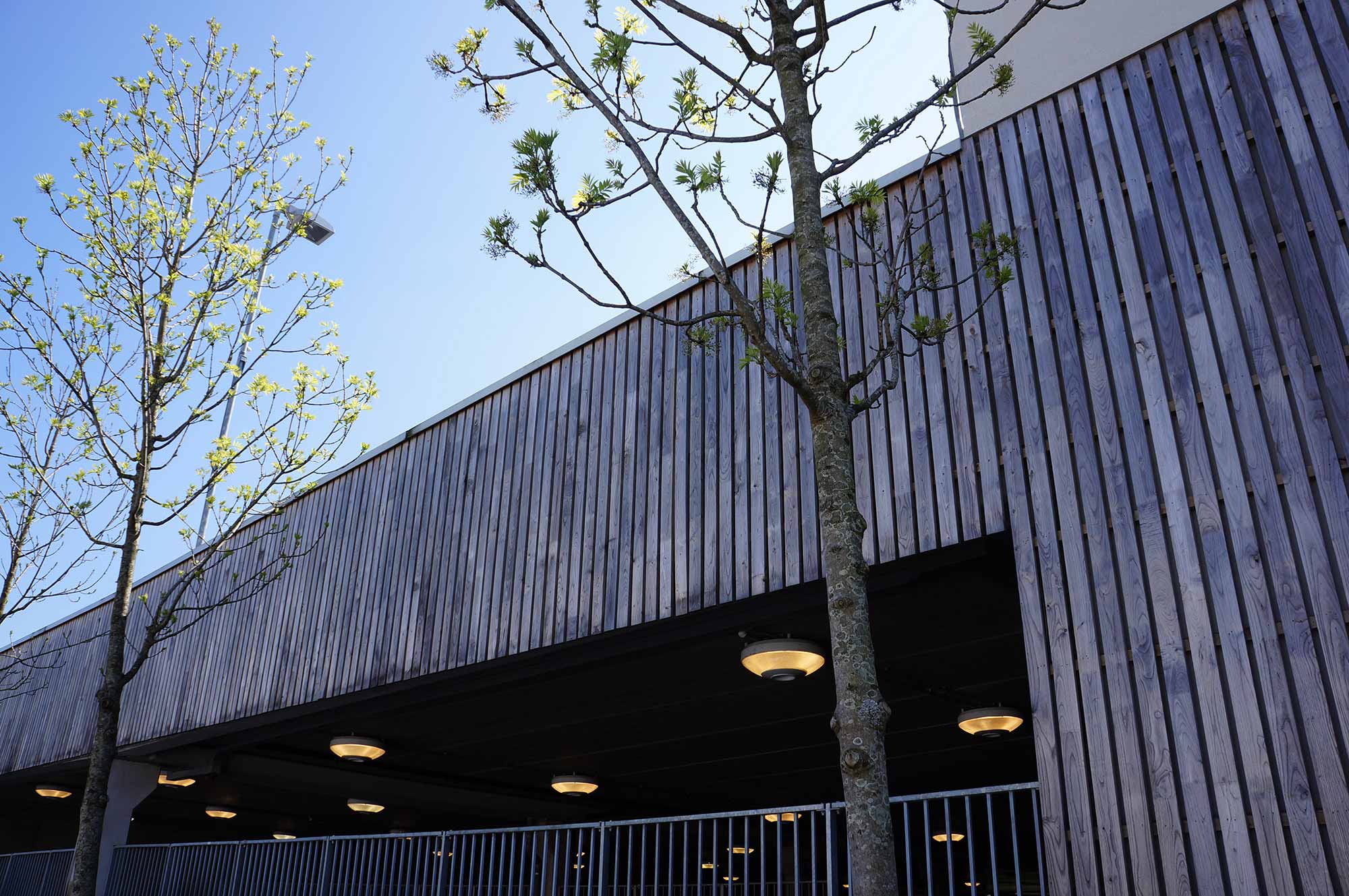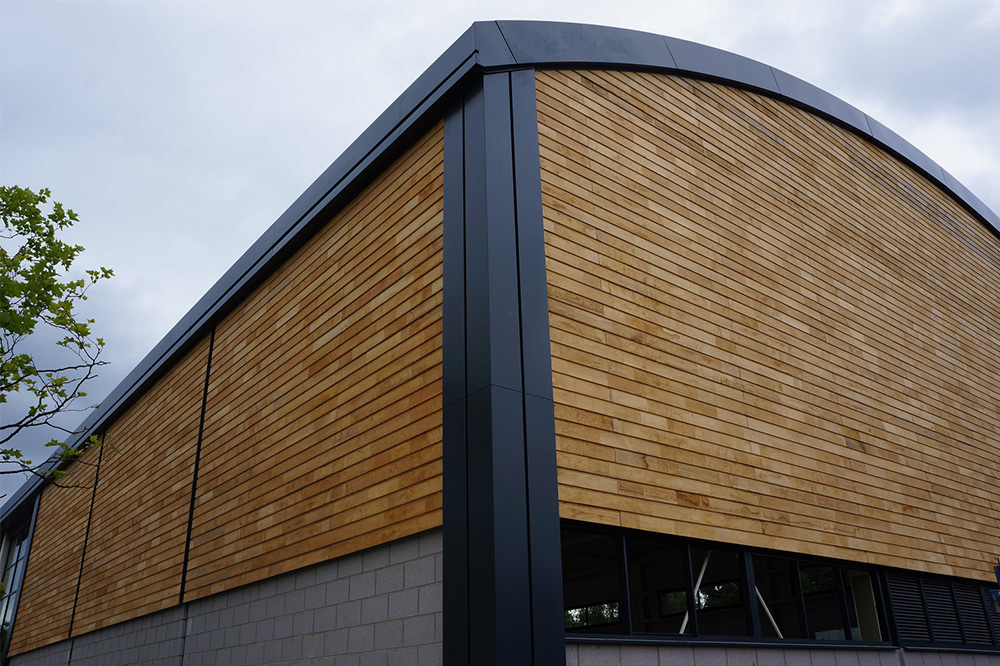British Sweet Chestnut – Everything You Need to Know
Here at NORclad, we’re passionate about timber cladding, and we love sharing useful tips and resources regarding particular species. This guide, for example, includes all the necessary information concerning British Sweet Chestnut, an indigenous hardwood specie which grows widely across many parts of Britain.
British Sweet Chestnut is one of our favourite timber species and is a popular choice for external cladding and projects that require a hard-wearing and stable wood. Make sure you check out our range of British Sweet Chestnut cladding and discover how you can use this timber to create an outstanding exterior to your building.

Appearance and Durability
British Sweet Chestnut is often favoured for timber cladding projects because of its appearance. It is a similar golden colour to that of oak, but offers stronger and more pronounced grain with occasional dark brown mineral streaks. It provides an excellent finish and can add character and life to your building. It will initially start with a light straw like appearance, but will weather to a natural silver-grey colouring if it isn’t protected with a good quality semi or fully translucent UV-radiation protective coating.
Sweet chestnut timber is a specie well known for its durability and sturdiness. It is often viewed as an alternative to oak, and although it is a lighter specie, British Sweet Chestnut is a stable, straight grained and hard-wearing timber specie (when the sapwood is excluded). This makes it ideal for external cladding and other uses, like joinery and decking.
Chestnut cladding isn’t as vulnerable to knocks, scrapes and scratches as other woods, which is crucial when being utilised for exterior cladding and for flooring purposes.
It also takes stains, oils and paint coatings well. The timber absorbs stains and paint in a natural way, ensuring that it creates a natural and professional finish.
British Sweet Chestnut Cladding Maintenance and Treatment
Sweet Chestnut wood has a particularly high tannin content, and it should be noted that it will start to exude within the first few months after installation, especially when the timber becomes damp or wet. This will result in staining where the timber either comes into direct contact, or has poor interface detailing with other materials, such as render, masonry, or permeable stone – we highly recommend protecting any surfaces that are likely to come into contact with the board prior to fixing to prevent this from happening.
Like any timber and building material, Sweet Chestnut cladding will change over time, so it’s important to keep it protected. Weathering and degradation are natural aspects, for example, but can be controlled and limited if treated effectively.
British Sweet Chestnut Prices
For the best British Sweet Chestnut prices, get a quote from our timber specialists today. We’ll take into consideration how much timber you’ll need, what measurements you require, as well as other information to help provide the most accurate and competitive price. We are passionate about delivering the best value for all our clients so make sure you get a quote from us before you start your project. Our team will help you understand how timber cladding is priced and may be able to suggest different timber for your project. Our team can also start to discuss the logistics of your build and help ensure you have everything you need.
We have used British Sweet Chestnut as well as numerous other timber species for many different types of building projects, so you can be confident that we can guide you in the right direction.

Best Fixings and Installation for British Sweet Chestnut Cladding
British Sweet Chestnut is a great material to work with and it can be cut and nailed. Although fixings often get overlooked, we always highly advise using only quality stainless steel fixings to avoid corrosion of ferrous metals.
Installing British Sweet Chestnut cladding or any other wood specie is often best carried out by a professional. This ensures the cladding is not damaged during installation and that each panel fits together as it should.
Tips for Using British Sweet Chestnut Timber
Although British Sweet Chestnut is often compared to oak, it is in fact lighter than oak and easier to work with, but we do recommend pre-drilling to help prevent the wood from splitting and cracking.
It is also crucial that when British Sweet Chestnut is selected for timber cladding, it is either Air Dried or Kiln Dried.
We’d also advise looking at examples and case studies of British Sweet Chestnut as well as other timber species. Seeing how they look in the real world will help you visualise what it is you are trying to create.
British Sweet Chestnut Timber Cladding at NORclad
If you’re interested in using British Sweet Chestnut for your build project or would like to discuss other timber species, then make sure you either get a quote from us or simply contact us for a chat. Our team of experts are waiting to help you get started.
See more: Garden Decking – Everything You Need to Know
See more: Interior & Exterior Wall Cladding Ideas


















